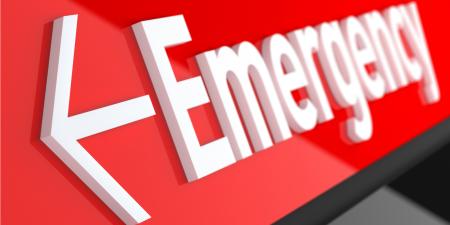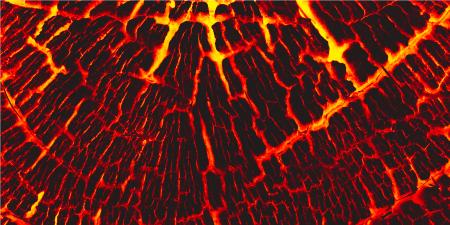Say “emergency room,” and many Americans imagine (handsome) doctors treating gunshot wounds, doing chest compressions and fixing broken bones, or—increasingly—they associate emergency care with long waits. Ask medical providers about work in the emergency department (ED), and another set of labels may surface: triage, chaos, overcrowding, and “frequent fliers.” Diverse perceptions of the ED are matched by the myriad contexts in which services are provided. The practice of emergency medicine is shaped by the needs of the community; depending on their location, patients may seek care in freestanding urgent care centers, suburban settings, county hospitals, and large academic centers. Even within the same facility, emergency practitioners make decisions in varied contexts, ranging from the sudden commotion in the trauma bay surrounding an unconscious car crash victim or the encounter during the wee hours of the morning when domestic abuse is discovered masked as unspecified abdominal pain. Patients from all ethnicities, incomes, and neighborhoods appear with any imaginable illness and have all manner of expectations. No matter the setting, on any given shift, the most emergency physicians can expect is the unexpected.
Few will deny that the clinical environment of the ED demands quick decisions based on incomplete or inaccurate information. In addition, much of the stress associated with emergency care is derived from the intense social and emotional situations that roll through the door and inevitably center on the physician. Whereas the initial paucity of information can be addressed with lab tests and imaging studies as the medical workup unfolds, information relevant to legal decisions or patients’ wishes is noticeably absent in many emergent cases. In quickly unfolding situations, decision making must be almost automatic. Just as clinical scenarios are frequently practiced in the ED (think back to the mega-code training exercise for your ACLS course), developing strategies for ethics reasoning in advance of encountering tough situations is important for students and trainees. For any clinician, but emergency practitioners in particular, an important part of this skill set is recognizing patterns of dilemmas. In our medical education article, Kelly A. Edwards and I draw on our experiences teaching ethics for the intense ED environment to help trainees become as nimble in resolving human conflicts as they are skilled at evaluating a differential diagnosis for chest pain.
Situations where it is impossible for a physician to deduce what the patient would have wanted are often the easiest ethically: the most aggressive care is applied until it is clear that further intervention is futile. The conversation becomes more difficult when family insist on treatment even after futility is determined. In her case commentary, Caroline Pace broadens our conception of futility in the emergency department, concluding that spending a few minutes more on a resuscitation for the family’s benefit may not impact other patients at all. But as Douglas Bernstein reminds us in the journal discussion, there were hours of seemingly futile care provided in the wake of Hurricane Katrina that upended common standards of distributive justice.
Sometimes, emergency providers are on the other side of requests at the end of life. Refusal of life-sustaining medical care is frequent in the ED, especially as powers of attorney are made known in the midst of resuscitation. Stephanie Cooper comments on a case in which a patient with a low, but still present, chance of survival refuses lifesaving intervention, illuminating the complexities of determining decision-making capacity.
Frequently, it is not time that is limited in the ED, but resources. The most common context of resource limitation is in disaster situations. Damon Allen Darsey and Robert Galli help us understand the physician responder’s mindset in the midst of a large urban health emergency. Their case commentary illustrates not only the importance of rehearsed plans, but also how dependent disaster responders are on the principles of triage. As foundation for managing disaster response, Christopher H. Lee’s clinical pearl walks us through the necessity of organized triage—why in times of scarce resources, physicians may be ethically obligated to let the sickest patients go untreated to save others. Sometimes, however, physicians may question whether to respond to a disaster at all. Douglas Bernstein’s review of two articles in the emergency literature highlights clinicians’ internal conflict related to both individual and corporate disaster response.
Comments on disaster ethics in 2010 are not complete without reference to the enormous tumult experienced in the January earthquake in Haiti. Gregory Luke Larkin takes the concepts described in the journal articles to the next level in his op-ed, “The Ethics of Teamwork in Disaster Management.” He reflects on his own experiences in the wake of the Haitian earthquake and reminds emergency providers and their professional societies of their obligations to organize cooperative, effective, and sustainable responses to health care disasters.
After considering the situation in Haiti, it is difficult to call the health care situation in the United States a disaster. Listening to the rhetoric in the lead-up to the health system reform bill this year might convince you to believe otherwise. But the early history of the emergency medicine field, as Brian J. Zink reminds us, was characterized by a culture of social justice—the willingness to see anyone, with anything and at any time—that continues to shape the American conception of medicine. No physician in the American health care system besides the ER doc is obligated by law to see any patient who walks through the door with a medical condition that could be serious. The 25-year-old Emergency Medical Treatment and Active Labor Act (EMTALA) requires just that, and is cited by some physicians and policymakers as a chief reason that medical care is so expensive. In the health law section, Edward Monico interrogates that notion and advocates for a more nuanced view of the law.
The fact that the emergency department affords every patient the required-by-law medical screening exam—and usually a diagnosis and treatment as well—has led to nonurgent ED visits, which are blamed for cost overruns and for clogging the system with patients who cannot pay for the services provided them. John C. Moskop debunks this belief with data that suggests several other causes for crowding in the ED. Coupled with Laura Burke’s review of the 2009 Massachusetts statute banning ambulance diversion, and the nearly seamless response hospitals made to prevent overcrowding, we are forced to examine other causes of crowding.
As more patients arrive in the emergency department each year, the teams of nurses, physician assistants, mental health professionals, physicians, and social workers assembled to help them have carved out an enduring niche for the ED as the American health care system’s safety net. Jay Baruch reflects on the social role of the emergency room and notices that, in the process of offering reliably comprehensive services, emergency medicine has raised the traditional expectations of the health safety net. Even in the midst of the chaos of a crowded space, Baruch’s ED provides comfort not only to the individual, but to a society continuing to long for health security.
The American honeymoon with the ER is over. It is expected that the challenges of time, space, and resource limitations facing emergency medicine today will only increase when more patients have health insurance. The doors are still open around the clock, and all patients are guaranteed at least a medical exam, but wait times are increasing and emergency departments more crowded. When a medical decision in the ED is accompanied by an ethical dilemma, the latter is often overlooked to the detriment of the patient’s well-being. I hope this issue of Virtual Mentorprepares emergency providers for that next ethical dilemma. Chances are good it will occur on your next shift.



